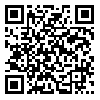BibTeX | RIS | EndNote | Medlars | ProCite | Reference Manager | RefWorks
Send citation to:
URL: http://rjms.iums.ac.ir/article-1-2552-en.html
Background: The problem of relapse makes the addiction treatment complicated. Almost 50% of Iranian addicts relapse after treatment completion. This paper aimed to report certain demographic variables correlated with relapse in patients referring to two selected addiction treatment centers in Tehran.
Methods : In this case – control study, 160 patients for case group and 160 for the control group were recruited from two of the outpatient addiction treatment centers in southern Tehran. Patient entered the case group if she/he had one episode of completed treatment prior to relapse, and also she/he had been in the current treatment plan for at least 3 weeks. Individuals selected for the control group never had relapse, and had abstained for the last 12 months. For data collection two questionnaires were used: 1) the researcher made questionnaire, 2) General health tool. Using SPSS software 16, descriptive and analytical statistical tests were performed.
Results: The mean age and family members in the case group was less than the control group. In other words, those with decreasing age and increasing no. of family members showed more likely substance abuse relapse { T= -4/7( 95% CI= - 2.5910 - ، 6.3220 ) and T=2/51 (95% CI= 0.9114 ، 0.1110 ( respectively }. Also, the results showed that the proportion of employed individuals and users of opioid drugs had less chance of relapse in comparison with unemployed who consumed semi-synthetic stimulants such as crack and grass{ OR= ./159 (95% CI= ./113 , ./327 ) and OR=./208 (95% CI= ./128 , ./336), respectively }.
Conclusions: The results reveal that socio-demographic variables as well as emotional, psychological and medical traits correlate with relapse in drug abusing individuals. Exploring these correlates may predict the likelihood of relapse among drug users. Also it is suggested when designing treatment and prevention programs variables associated with relapse must be targeted.





